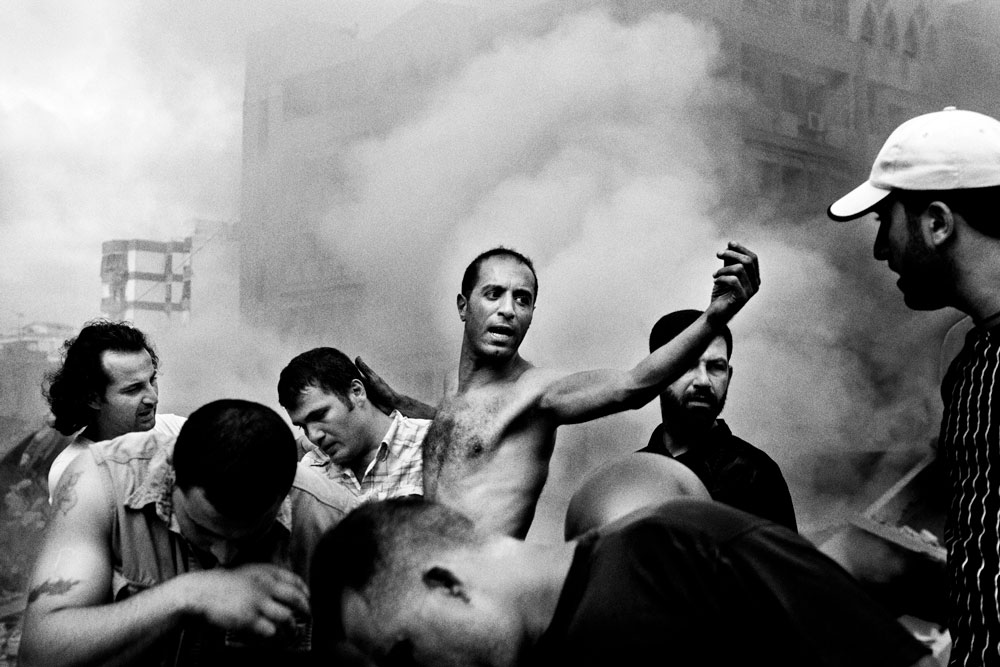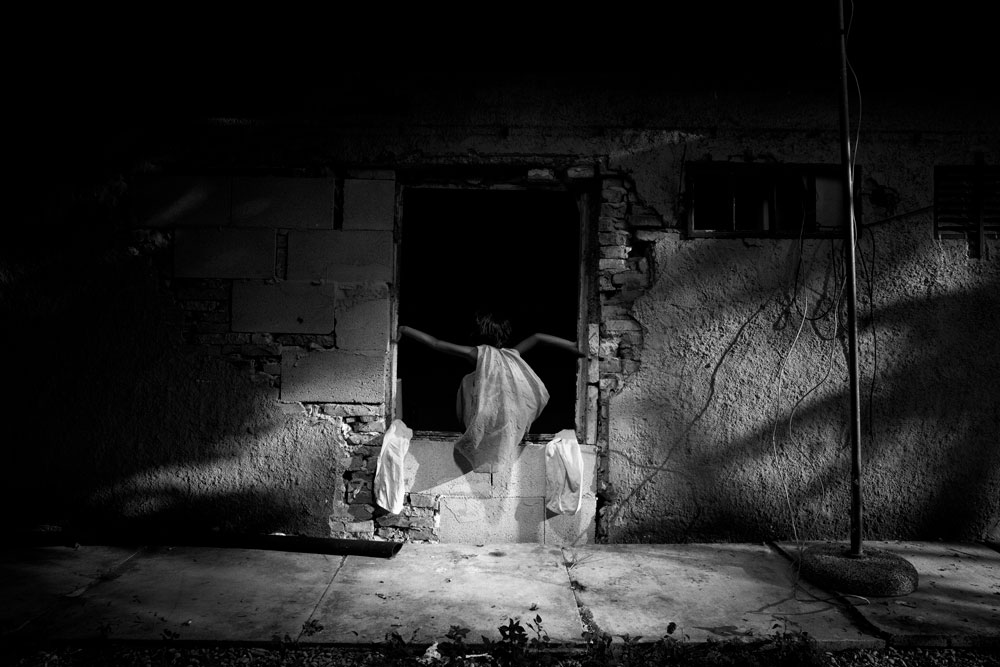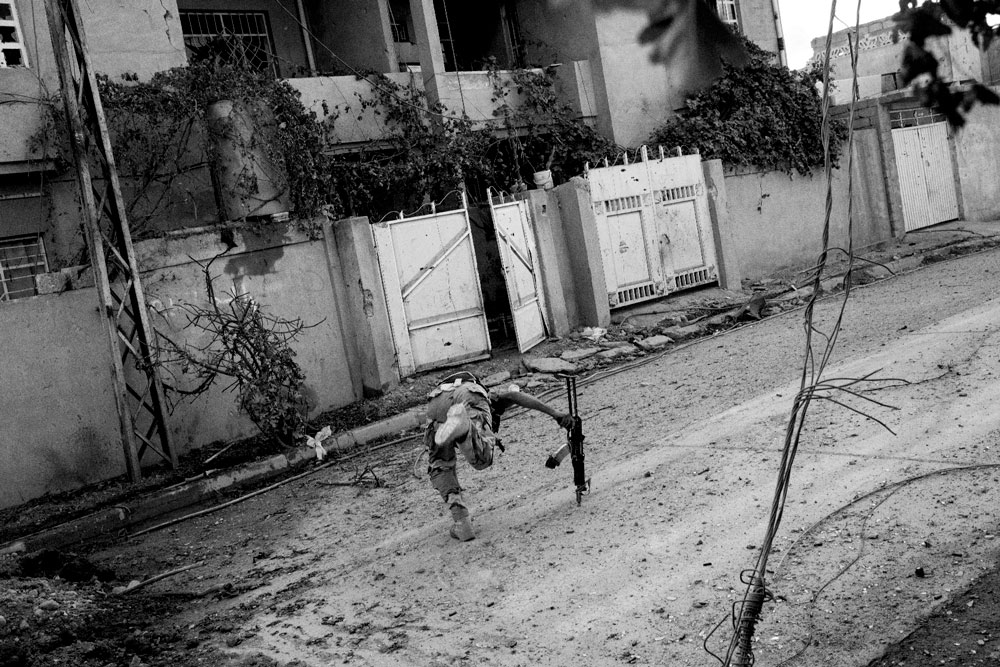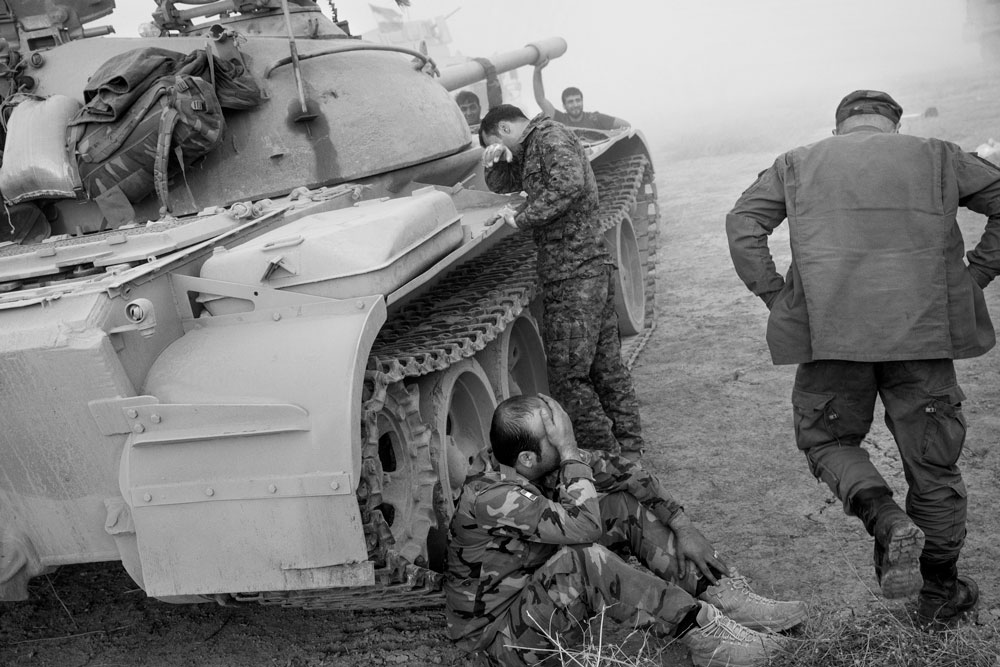PHOTO:Paolo Pellegrin-Un’Antolgia
 Paolo Pellegrin profoundly interested in people and their relationships with places, events and their fellow humans. He has travelled throughout the world with his camera, recounting people, wars and humanitarian emergencies, along with stories of great poetry and extraordinary, pulsating nature. Magnum Photos full member from 2005, he has won 10 World Press Photo Awards and numerous other prestigious prizes throughout the world.
Paolo Pellegrin profoundly interested in people and their relationships with places, events and their fellow humans. He has travelled throughout the world with his camera, recounting people, wars and humanitarian emergencies, along with stories of great poetry and extraordinary, pulsating nature. Magnum Photos full member from 2005, he has won 10 World Press Photo Awards and numerous other prestigious prizes throughout the world.
By Efi Michalarou
Photo: MAXXI Archive
Entitled “Paolo Pellegrin. Un’Antolgia”, the exhibition at MAXXI is the result of two years of intensive work on the photographer’s archive and traces through more than 150 images, including numerous previously unseen works and a number of videos, a 20-year period in his career, from 1998 to 2017. It represents an invaluable introduction to his creative and documentary career and an opportunity to explore the issues that underlie his work in which the vision of the reporter and the visual intensity of the artist entwine and become one. The exhibition layout is articulated between the two extremes of light and dark. The initial section is dark. The color black dominates, populated by the stories of human suffering: the wars, the tensions, the destruction, but also the intimate beauty of mankind in the expression of its deepest emotions. The second part is instead characterised by a luminous space in which prevail images of nature that in its majesty and distance seems to recall the fragility of the human condition. At the entrance, a large wall is dedicated to the Battle of Mosul from 2016, chosen by Pellegrin as a metaphor for the conflict, explodes like a contemporary Guernica. Here we also find a series of images shot in the USA that discuss tensions, race, poverty and crime. And then there are men, women, children, soldiers, refugees and migrants from Gaza to Beirut, El Paso to Tokyo, Rome to Lesbos. People praying, weeping, fleeing, fighting: every image captures and sublimates with great sensibility the conflicts, contrasts and dramas of our tormented and complex times. Like, for example, in the foreground, the suffering face of a refugee at Lesbos waiting to be registered, exhausted by heat and thirst, almost a contemporary Pietà, or the blow-ups of the three Isis prisoners waiting to be processed, who Pellegrin portrayed in Iraqi Kurdistan in 2015. At the back of the gallery are evanescent figures, “transitory” portraits captured in moments of passage that appear faintly from the dark like “ghosts” as Pellegrin defines them. This account of the human being lowered into the dark is countered by an immersion in a suddenly luminous environment, with an evanescent light where the real seems to be sublimated in the candour of the Antarctic ice, the protagonist in a recent reportage for NASA, in the gaze of a young Rom woman, in the power of the natural elements, in the spirituality and the profundity of man’s atavistic relationship with himself, as in the case of the two young Palestinians bathing in the Dead Sea. The two parts of the exhibition are connected by a passage that takes the visitor behind the scenes of Pellegrin’s visual research: drawings, notebooks, notes and snapshots document the complexity of a creative process that is based above all on research, knowledge and preparation. Pellegrin considers photography to be a language composed simultaneously of rules and instinct. It is rooted in years of study around the image, the vision, the gaze: all aspects that the photographer has trained from the outset of his career through his interest in literature, the history of art, architecture, film and of course the work of the great masters of photography. On the occasion of the exhibition, there will also be a preview of the first part of the photographic project realised by Paolo Pellegrin at L’Aquila last January, within the ambit of the photographic commission entrusted to MAXXI. Gallery 1 on the ground floor will be featuring a 2 x 3 metres wide polyptych composed of 140 small images in high contrast black and white that portray corners and details of what is a still wounded city and interpret the sense of loss that follows the drama of the earthquake. The other part of this work is composed of large format colour photographs in which Pellegrin, venturing outside the city, photographed the countryside and the mountains around L’Aquila during the course of a night illuminated only by the moon. These images will be exhibited for the first time at Palazzo Ardinghelli on the occasion of the inauguration of MAXXI L’Aquila in 2019, a project entrusted to the Fondazione MAXXI by MiBAC in order to contribute to the rebirth of the area through culture. Pellegrin’s photographic work, composed of thousands and thousands of images, frequently emerges from contexts and settings on the edge of existence, that of both nature and mankind. With Pellegrin the photographic document, testimony to an investigation as well as a participation, stands not as objective representation of people, contrasts or objects, but instead tends to capture the spirit of the moment. His greys and his blacks, his shadows, his diagonals transcend the when and the where. His figures, his portions of bodies, his faces become testimony to a feeling and a breath around human stories. And natural events: an attempt to fix the forces of existence, in the all the possible conditions of survival and of life.
Info: Curator: Germano Celant, MAXXI – National Museum of XXI Century Arts, Via Guido Reni 4A, Rome, Duration 7/11/18-10/3/19, Days & Hours: Tue-Fri & Sun 11:00-19:00, Sat 11:00-22:00, www.maxxi.art






